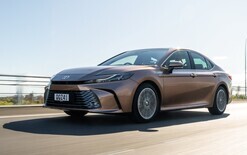Industry body ditches support for clean car standard

The Motor Industry Association (MIA) has withdrawn its support for the government's clean car standard, saying the proposed legislation to slash transport emissions contains a “nasty surprise”.
The move comes after Michael Wood, Minister of Transport, introduced the Land Transport (Clean Vehicle) Amendment Bill into parliament on September 8.
Members of the MIA have been poring over the bill, which is designed to legislate the clean car discount and clean car standard, and the organisation concludes the government has shown an “appalling lack of understanding”.
David Crawford, chief executive, notes the MIA has often said it will support “well thought out and constructive policies that will lead to an increased rate in the reduction of CO2 emissions from the light vehicle fleet”
In an official statement, he explains the bill has ignored considered advice from industry, will impose “crippling” costs on new-vehicle distributors, increase the price of cars for consumers and will also fail to effectively reduce emissions.
Concerns arising from the proposed legislation include the ability for regulators to specify a proportion of zero-emissions vehicles to be sold by marques, and emissions targets dropping unexpectedly sharply beyond 2025
“The 2026/27 targets are a nasty surprise,” says Crawford, pictured. “Under the targets in the bill, there is a 40 per cent reduction in emissions required from now until the end of 2025 and then a 43 per cent reduction required over the next two years to the end of 2027.
“No jurisdiction anywhere in the world requires this rate of reduction and which will see us get ahead of what Europe requires for that same time-period.
“The bill as tabled in parliament deviates from standards implemented in other countries and is poorly designed. The rate of reduction – emission targets – is so steep that no current distributors apart from those solely supplying battery electric vehicles, can reach them in the time span required under the bill.”
Tough targets
The government wants to introduce the clean car standard from 2022, with the aim of influencing what models are brought into the country.
Its proposals, which have yet to go before a parliamentary select committee, state new cars entering the fleet must average 145g of carbon dioxide (CO2) per kilometre in 2023, with that level dropping to 63.3gCO2/km by 2027.
The current average for the new-vehicle industry, according to the Ministry of Transport, is 171gCO2/km.
Crawford says there is no obvious rationale for the fast-falling targets, which are tougher than jurisdictions such as Europe, and they appear to be a “revenue-gathering exercise”.
“New Zealand new-vehicle importers’ parent companies are already making their production plan out to 2030 and these will be based on what Europe, Asia and Australia need not what our government wants.
“When combining fees under the clean car discount with penalties under the clean car standard, the price for light vehicles will need to increase on average by about 15 to 20 per cent to offset the penalties. Because the clean standard is applied on a weighted basis, even small vehicles will be hard hit.”
The MIA says it is also alarmed at the cabinet’s decision to require all vehicles, whether new or used, manufactured from January 2022 to be tested using the Worldwide Harmonised Light Vehicle Test Procedure (WLTP) protocol, or if that is not available the American EPA test.
The WLTP protocol is only required for the Euro 6(d) vehicle exhaust emissions standard, which Australia and New Zealand have not adopted.
“Further, the cabinet paper incorrectly stated our source market for vehicles is Europe and Japan, who already require WLTP testing,” adds Crawford.
“This was based on incorrect advice from officials who, at the time it was written, did not understand that New Zealand’s major source of vehicles are those made for Australia and complied to their standards, which currently do not require WLTP.”





